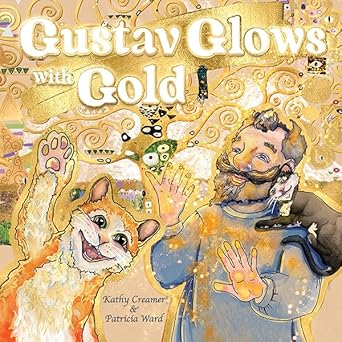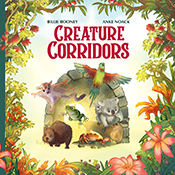
Gustav Glows with Gold
Kathy Creamer & Patricia Ward
Little Pink Dog Books, 2025.
ISBN: 9780645418477
Review by Genevieve Young-Evans
Gustav Glows with Gold is a creative non-fiction picture book that introduces young readers to the famous Austrian artist, Gustav Klimt. The lyrical wording imbues the discussion of Klimt’s methods, his materials, inspiration and subject matter with a little bit of magic! This is achieved by the focus on Klimt’s use of gold leaf and the imaginative consideration of what this material must have been like to work with.
A particular highlight of the story is Patricia Ward’s evocation of Klimt’s famous works and his studio which pulses with life and colourful clutter in Ward’s own artworks. Part of what makes the studio spreads so enticing, and the book itself, is the two cat characters. Klimt’s love of cats is hinted at in the text and brought to life in many spreads where a ginger and tuxedo cat exude playful, mischievous fun. Cat lovers, young and old, will love the cat waving to them on the front cover, the golden paw prints that walk across the front pages and the many scenes of Klimt cuddling his cats.
But the cats are only part of the fun! The many double spreads are filled with details to explore—pots, paints and paintbrushes, plants, books and other creatures. There are so many details for readers to pore over and the text works seamlessly with these details to gently direct the reader to consider aspects of the artist’s use of pattern, light and colour.
Gustav Glows with Gold is an enchanting introduction to an amazing artist. Reading it will be a great way to interest children in art and what they might want to think about when considering other artworks they encounter.

